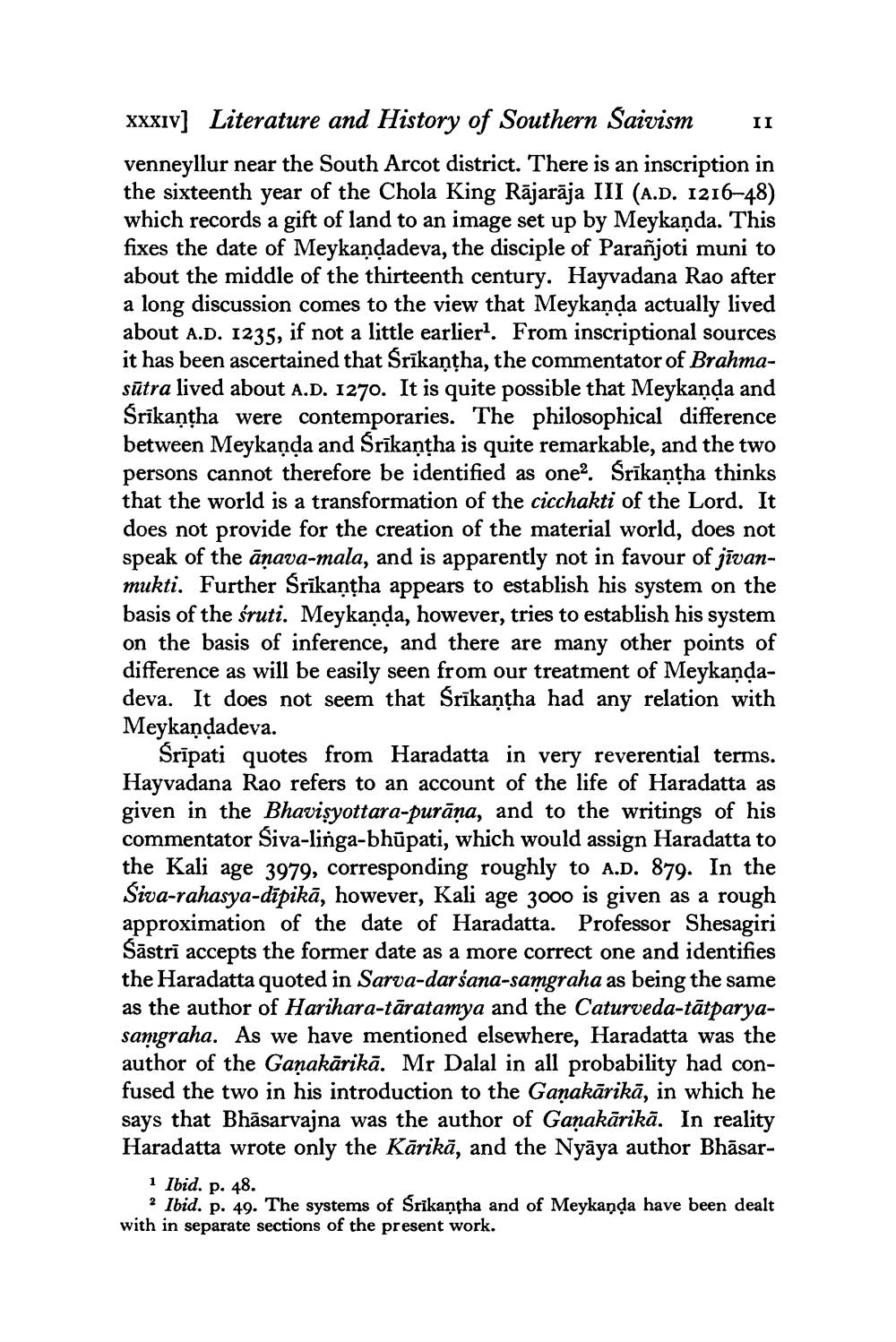________________
XXXIV] Literature and History of Southern Saivism II venneyllur near the South Arcot district. There is an inscription in the sixteenth year of the Chola King Rājarāja III (A.D. 1216-48) which records a gift of land to an image set up by Meykaņda. This fixes the date of Meykaņdadeva, the disciple of Parañjoti muni to about the middle of the thirteenth century. Hayvadana Rao after a long discussion comes to the view that Meykanda actually lived about A.D. 1235, if not a little earliert. From inscriptional sources it has been ascertained that Srīkantha, the commentator of Brahmasūtra lived about A.D. 1270. It is quite possible that Meykaņda and Śrīkantha were contemporaries. The philosophical difference between Meykaņda and Śrīkaņķha is quite remarkable, and the two persons cannot therefore be identified as one . Srikantha thinks that the world is a transformation of the cicchakti of the Lord. It does not provide for the creation of the material world, does not speak of the āņava-mala, and is apparently not in favour of jīvanmukti. Further Srikantha appears to establish his system on the basis of the śruti. Meykanda, however, tries to establish his system on the basis of inference, and there are many other points of difference as will be easily seen from our treatment of Meykandadeva. It does not seem that Srīkantha had any relation with Meykaņdadeva.
Srīpati quotes from Haradatta in very reverential terms. Hayvadana Rao refers to an account of the life of Haradatta as given in the Bhavisyottara-purāņa, and to the writings of his commentator Siva-linga-bhūpati, which would assign Haradatta to the Kali age 3979, corresponding roughly to A.D. 879. In the Siva-rahasya-dīpikā, however, Kali age 3000 is given as a rough approximation of the date of Haradatta. Professor Shesagiri Šāstri accepts the former date as a more correct one and identifies the Haradatta quoted in Sarva-darśana-samgraha as being the same as the author of Harihara-tāratamya and the Caturveda-tātparyasamgraha. As we have mentioned elsewhere, Haradatta was the author of the Ganakārikā. Mr Dalal in all probability had confused the two in his introduction to the Ganakārikā, in which he says that Bhāsarvajna was the author of Ganakārikā. In reality Haradatta wrote only the Kārikā, and the Nyāya author Bhāsar1 Ibid. p. 48.
Ibid. p. 49. The systems of Srikantha and of Meykaņda have been dealt with in separate sections of the present work.




